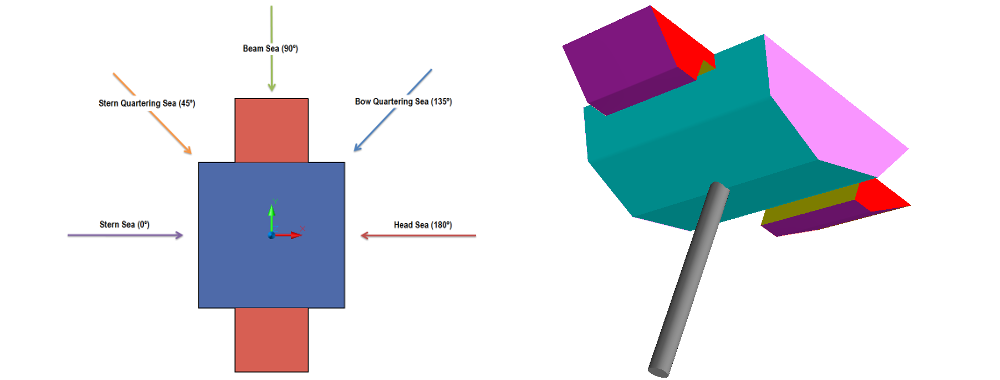
- Full title Plataforma de sujección flotante para hidrogeneradores
- Funding entity Xunta de Galicia
- Researchers Fernando López Peña, Vicente Díaz Casás, Alba Martínez López, Marcos Míguez González, Daniel Souto García, Pablo Fariñas Alvariño
- Start date 01/10/2009
- End date 30/09/2012
- Centro Tecnolóxico do Naval Galego
- Sagres SL
Description
The aim of the project was to design a system for harnessing surface currents at sea. It would comprise a floating platform to which a three-bladed cross-flow hydrogenerator is anchored, designed for slow currents. This platform is fixed to the seabed by an anchor system designed to prevent harm to the sea floor or sea life. Energy is brought to shore by a standard underwater small diameter transmission cable.
This support system would be partially visible above sea level and suitably signposted. In this way, navigation aids such as a radar reflector, a daylight marker or a pilot would help ships locate it. This would reduce its impact on our navigation system in areas of high sea traffic. A part of the generated energy will be used to feed an optical signal warning traffic of the hydrogenerator’s presence.
The floating platform will also contain all the systems related to energy generation, control and its own positioning; this will facilitate maintenance. The hydrogenerator would operate at the depth of 5 to 10 metres underwater.
In addition to finding a suitable hydrodynamic design for the structure, a key task in this project has been to study the structural loads for the support system that will join the platform with the L-shaped hydrogenerator. As we want to develop a system that reduces current costs, the design and structure have to achieve two objectives. Firstly, operating and structural requirements have to be met. Moreover, the construction process needs to be simple and adapted to the procedures followed in the shipyards of Galicia (Northwestern Spain).